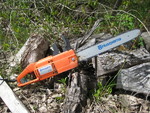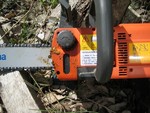This review is a triple-header. It’s about connecting to the internet when cable service is $7,000 away, distributing that data stream wirelessly within one’s home, and then sitting down to a well-toasted piece of bread. Make that a quadruple-header, because I’d like to discuss bread as well.
Wireless Internet service through Verizon and a USB727
I live in the boonies of Vermont. I am 24 houses from the end of the power line. The power line doesn’t actually come to my house – I'm too far from the road. For a few years now I have used Wildblue satellite service for my internet connection. It is far from ideal, but, as mentioned above, the local cable company would have charged me $7,000 to extend their line from what is presently the last house on the line, about a quarter of a mile away. I’m about half a mile too far for DSL. So, I have a satellite pizza dish, 1.3 second latency (the time it takes a signal to travel through the system and do something), and between 250 kilobits per second (kbps) and 1.1 megabits per second (Mbps) download speed, depending on weather and traffic. All for $70 a month.
I looked into Verizon Wireless and their version of a 3G network. I used to have one of their PC card data modems. It was expensive and slow, but it offered an internet connection wherever I could get cell phone reception. The new 3G network promised more. I hunted around on some wireless forums and found reports of 1 Mbps and better out of the USB cellular modems. The Verizon plan offered up to 5 gigabytes per month for $60, so I decided to give it a try.
I did some more research and bought a Novatel USB 727 modem on eBay. It is about the size of a bloated pack of chewing gum, with a flip up antenna on one end and a USB connector on the other. It also has a slot on the side for a micro-SD memory card, so it can act as a thumb drive. The USB727 is slightly out of date, but there are other duplicate devices available from Verizon and other vendors. I have a Wilson cellphone booster antenna intended for truckers left over from my PC card experience, along with a coaxial-to-cell-modem adapter dongle. Wilson also makes a variety of antennas for stationary applications, as well as signal boosters. I haven’t tried those products yet, so you are on your own.
I signed up month-to month with Verizon, downloaded the VZ Access Manager software, and tried the USB727 by itself. In an area with exceptional cell reception I saw download speeds approaching 2 Mbps. Back home I saw around 500 kbps. With the booster antenna attached the download speed jumped to 1.1 to 1.6 Mbps with latency around 0.13 seconds and upload speeds approaching 500 kbps. It isn’t broad broadband, but better than the culvert I have been crawling through.
The problem with this system is positioning the trucker’s antenna, snaking the coaxial cable over to my notebook computer, plugging in the microscopic adapter plug, and keeping the USB device/adapter assembly all connected. My PC card modem had suffered plug failure after repeated plug/unplug cycles, so I bound the adapter dongle to the side of the USB727 permanently with a whipping of waxed sailmaker’s thread. How’s that for beyond steampunk? I set out to find a USB compatible wireless router.
The Cradlepoint CTR350
I did some more research and at first found only three categories of USB/wireless modem compatible routers: 1) Discontinued, 2) Whined about, or 3) Wicked expensive. The Netgear unit was alternately praised and derided. The D-link hardware was deemed buggy, but then all of the options were deemed buggy. Then I came across the Cradlepoint CTR350. Very little bad said about it, and much praise for its versatility. I figured it was worth a gamble and eBayed one for around $86 with shipping.
The thing is tiny – shirt pocket compatible. It comes with an AC wall cube adapter and there is a 12-volt DC adapter available in case you want to create a wifi hotspot in your car. The inputs are a USB socket and an ethernet cable socket. There are a few LED indicators, and that’s it. The setup instructions were a foldout brochure, with references to online resources for more advanced tiddling. It can be set to WEP security, WPA, or the more recent WPA2.
I plugged the USB727 into the CTR350 and the CTR350 into a power strip and followed about four steps of directions. My computer picked up the signal and connected. I keyed in the default password, logged on, changed the password, and started surfing. There was no apparent loss of speed or increase in latency. I put the router on the second floor, took my computer to the basement and it still picked up a good signal.
Soon Wildblue will be a memory. But onward, to the culinary delight that is hot buttered toast.
The Kitchenaid KMTT200SS
My family used to have a 1960’s era GE toaster. It was the classic stainless steel toaster, with an aerodynamic loaf-like shape and brown bakelite trim. It produced flawless toast, evenly browned and consistent from one slice to the next. I acquired it from the family basement, gave it away to friends during a move, and missed it ever afterwards. I later bought one of its millions of brothers, but that one had a defective timer and had to be watched to avoid a Cajun blackened slice. It also had narrow slots, adapted better to the commercial sliced bread of the 60’s than bagels and the hand sliced artisanal stuff that I eat.
More research, and I found much praise for the Kitchenaid KMTT200. The alphanumeric designation makes it sound more like a computer part, but it is a blocky, squarish, simple object, the cubist cousin of my old GE. I bought the stainless steel model, but it also comes with red or black enameled sides. The blocky form has a function. The added space for airflow means that the sides stay cool. The controls are simple: an adjustment knob, the push-down lever, a button for the bagel setting, and another button for the warming setting. The bagel button turns down the outer heating elements.
The main requirements for a toaster are evenness and consistency. The toast should be evenly colored on all areas of both sides and a darkness setting should always mean the same color of toast. The KMTT200 scores high on the first count and perfectly on the second. Square loaf-pan shaped slices come out evenly browned all over, but oval artisanal slices with angular edges tend to brown more on the thinner parts. The bagel setting works well, with the cut surfaces crisping nicely and the outsides warmed but not burnt. It accommodates slices up to 1 7/16” wide and 5 ¼” long, which is a happy thing for those of us who like a slab o’ toast. It is available online from a number of sources in a price range from $60 to $70. As is my wont, I went to eBay and found one for $52 with shipping.
A digression: Toast racks, or toast cooling racks, as a discerning friend of mine from Maine terms them. Why do they exist? The last thing anyone wants is cold toast. A standard toast rack, holding the slices vertically and slightly apart, is a perfect engine of culinary depravity, rapidly chilling the toast through convection and radiation. I would rather have a toast cozy, a highly insulated cover that would maintain butter melting temperatures during the transfer from toaster to table.
Anyway, two buttery thumbs up for the KMTT200, which brings me to bread.
Artisanal Bread and BLIM
I am lucky in that I live within a 25-mile drive of at least a half dozen fine artisanal bakeries. My local food cooperative has a section full of locally baked loaves. Some are dense and wheaty and some are white and chewy, but none are BLIM. BLIM is Bread-Like Ingestible Material. BLIM is the oblong, roughly rectangular, spongy material one might find in the bakery section of a standard grocery store, labeled “bread.” It compresses to one sixth its original size under minimal pressure and tastes like shredded newspaper with artificial bread flavoring. What passes for crust seems painted on rather than baked in. Driving across the country once I found virtually all BLIM and no real bread. It was sad to think of the millions of Americans who have never sunk their teeth into real bread.
So, I’m a culinary elitist, right? Wrong. There is real maple syrup and then there is artificial maple-flavored corn syrup, and it is illegal to sell the second under the name of the first. There is ice cream that has real milk in it and there is Dari Creme soft-serve that is sugar and flavorings mixed with binders, and there is a legal reason why the second product is misspelled. I suppose that since BLIM actually contains wheat and yeast technically it is bread, but a relatively flavorless, textureless, fiberless imitation of what our ancestors ate.
My two favorite bakeries around central Vermont are the Red Hen Baking Company in Middlesex VT and Bohemian Bread in Marshfield. Red Hen makes a wide variety of baked goods, but my favorites are their new Cyrus Pringle bread, made from Vermont-grown wheat, and their Mad River Grain, a multiple grain and seed loaf. Bohemian makes (among others) Troika Three Seed, a dense seeded bread with a tight crumb that makes a filling breakfast toast.
The Vermonters who read this can probably obtain real bread in their local stores. Those of you who can’t should lobby for it. There are bakeries out there that produce the real thing, and if pressured the BLIM makers could ditch the Reddi-Sponge (Yes, they named it that) dough conditioner and make at least one style of real bread.
Toast popped up – I gotta go.
 Tuesday, June 26, 2012 at 11:34PM
Tuesday, June 26, 2012 at 11:34PM  online,
online,  optometrists,
optometrists,  prescription glasses,
prescription glasses,  ripoff in
ripoff in  The Goods
The Goods 

